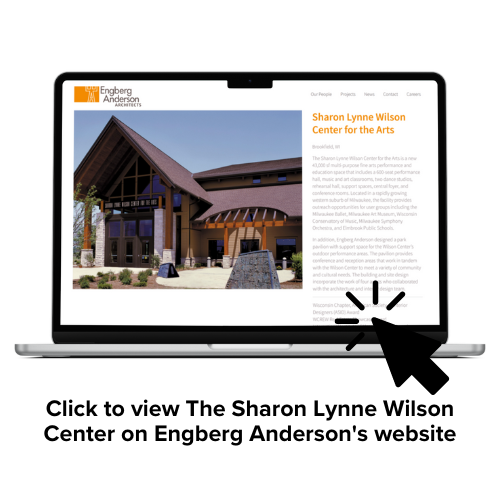THE WILSON CENTER STORY
Written by Phil Crump
Conceived in late 1993 out of two meetings in Mayor Kathryn Bloomberg's home office, the Sharon Lynne Wilson Center for the Arts became a reality in early 1994. It was obvious to those involved that the community needed such a facility--not only for the enhancement of its schools, but for the overall quality of life in Brookfield.
However, before any planning could be done, several issues had to be addressed:
Would the community be interested in such an undertaking?
How feasible was the concept?
What type of issues would the project involve?
It wasn't long until the outpouring of positive reaction led to the formation of a five-person steering committee comprised of Phil Crump, Gretchen Henry, Gary Jorgensen, Susan Kurtz, and Nick Owen. The group started the project on its eight-year long journey to completion.
In order to evaluate the interest and needs of other arts organizations in the greater Milwaukee area, a survey was conducted among approximately 50 performing arts groups. However, when the positive findings were released to the press, they were met with little public excitement. Nevertheless, the committee pressed on and continued to hold meetings throughout the spring of 1994, working on issues needing early consideration, including the financial relationship with, and involvement of, the school administration and other visual and performing arts groups.
Filings were made to incorporate as the Elmbrook Center for the Arts and to obtain non-profit tax-exempt status from the IRS. Though the by-laws provided for a maximum of nine board members, the committee continued as the original five-person Board, with Phil Crump as president.
A stated purpose was penned -
“to plan, design, build, and operate a visual and performing arts center in the Brookfield-Elm Grove area that will serve area schools, both public and private, the community, and performing arts groups in the greater Milwaukee area”
This assisted the Board in maintaining its initiative. A number of knowledgeable individuals also helped by sharing their experiences on similar projects, giving the Board insight into appropriate steps and potential pitfalls.
In mid 1994, requests for proposals were sent to 12 local architects with experience in theater design. Four were subsequently interviewed, but a final decision was deferred. The interview process made it clear to the Board that much homework had yet to be done, including the formation of a planning study and a financial feasibility survey, which was made possible by the $45,000 they raised from early supporters of the project. With the appropriate information finally gathered on market aspects, physical components, potential tenants, operating budget, and method of governance, the planning report was presented in September 1995 and became instrumental in giving direction to the members of the Board. The report not only exposed that it was vital for the facility to be family-oriented and in its best interest to include a major education component, but also included the unexpected revelation that four "downtown" arts groups were interested in becoming possible tenants in the facility - the Milwaukee Ballet, the Milwaukee Art Museum, the Wisconsin Conservatory of Music, and the Milwaukee Symphony Orchestra. These revelations spurred even more issues, and, in February 1996, the bylaws were amended to increase the number of directors to 25, and the Board was able to expand to 14.
With people power and research to back their vision, the Board re-interviewed the four architects to see if they were willing to voluntarily help with the early stages of defining the project. Engberg Anderson Design Partnership volunteered to help and spent countless hours over the next few years, without a contract, with the Board on informative visits to other similar facilities in southeastern Wisconsin. Though the project was finally moving ahead, the Board faced an interesting dilemma - it was anxious to keep the public advised of progress, but was reluctant to divulge too many specifics without having a clear sense of the final scope of the project. However, group meetings were held with public and private school educators, political leaders, and members of the business community (including hotel operators) to answer their concerns and assure them that the project was more than a rumor.
In late 1995 and early 1996, several meetings were held with representatives of the Elmbrook School District, the Elmbrook School Board, and the four performing arts groups interested in becoming potential tenants in hopes of exploring all of the groups needs prior to beginning the design process. It was decided, because of prohibitive costs, to include a 650-seat auditorium, rather than an earlier speculated 1,500-seat space. This decision, unfortunately, eliminated the Milwaukee Symphony as a major tenant, although their interest remained for appropriate, smaller performances. In April, the Board committed to the architectural services of Engberg Anderson Design Partnership and appointed Mark Ernst as designer. Likewise, the Board hired a firm to complete a fund-raising study; the report that followed six months later concluded that only six million dollars could be raised privately. Since this did not meet the Board's projected costs -seven and a half million - it was decided to seek a second opinion, rather than drop the project or build something less than satisfactory. In early 1997, an experienced and enthusiastic consultant, hired to assist in fund-raising, moved the Board forward to formulate a fund-raising plan. His firm continued to work under contract until the Board became confident that it could carry the fund-raising efforts to conclusion on its own.
Throughout this time, many other issues were addressed, including consideration of eight sites owned either by the city or the School Board. Throughout this review, it became evident that a long term, nominal cost land lease would be essential to the success of the project. Ultimately, Mitchell Park East was chosen for its accessibility, size of available land, the beautiful nature of the surroundings, its neutrality to the two high schools, the opportunity for indoor and outdoor performances and activities, and sharing of parking and other facilities with the city's use of the park. It also met Brookfield's mission for its parks "... to satisfy the recreational needs of the community; and to deliver quality benefit based leisure services and programs that meet the varied needs and interests of the community in a cooperative, innovative and responsible manner."
In April, a final presentation was made to the Parks and Recreation Commission, and they gave their approval for use of Mitchell Park East. In the meantime, architectural work was progressing and preliminary drawings were being produced. There were still more meetings with the School Board, school administrators, and other potential tenants. The Brookfield Common Council, and Park and Recreation Commission members were also contacted individually to keep them informed.
In July of 1997, Suzanne Hefty became the second president and the fund-raising phase took off. Major gifts were sought through personal contacts, with the first breakthrough coming in August 1997 when the Netzow family made a substantial contribution and provided free office space in a new building on North Avenue. The office was furnished and opened in November, and the project was presented to the Elm Grove Village Board and the Brookfield Common Council for informational purposes.
Chaired by Steve Smith of the Milwaukee Journal Sentinel, a Strategic Planning Committee was formed in October 1997 to provide guidance on issues, formulate an operating plan, and to consider individuals for the Capital Campaign Committee. Their report in December was enthusiastically received and endorsed by the Board. However, as the Lead Gift efforts continued without success, the Board, in April 1998, had to consider downsizing the project or spread the construction phases out over a period of time. Then, in May, a defining gift from the Wilson family breathed new life into the project and the corporate name was changed to the Sharon Lynne Wilson Center for the Arts. A reception was held in June at Bluemound Country Club to announce the gift and to encourage additional donors. It was then that pledges started to come in. Dave Drury and Bill Haack agreed to co-chair the Capital Campaign and others were recruited to help. Committees were created to handle public relations, tenant leases, and community awareness. The project soon made its way into the public eye, and many local organizations and schools jumped on board and held fund-raisers. Meanwhile, Voss Jorgensen Schueler Company, Inc. (now VJS Construction Services, Inc.) was retained as construction manager for the project, a temporary office manager was hired in October (the first paid employee), and a gift recognition list was developed, officially launching the Capital Campaign in November. Jacobus Communications was hired to assist with public relations and a sophisticated video presentation was developed.
As pledges were pouring in, the process of re-defining space needs and preparing architectural plans were underway. In February 1999, the Board approved a program of integrated art and five artists were asked to participate in the initiative that would enhance the facility both inside and out. Three million dollars in pledges and contributions was reached; however, in April, there was a challenge to the use of the Mitchell Park site by an organization concerned with park development. An informational meeting was held, at which a number of present and former Council and Park and Recreation members appeared, and it was made clear that the park property was accumulated over the years with the intended purpose of developing it into a "people's" park, with activities for all citizens.
In May 1999, a business plan was developed to consider operational issues, and the Board again increased its members by five. By July, the final plans for the project were approved by both the Plan Commission and the Common Council; however, wetland considerations and the discovery of Butler garter snakes, a threatened species, near the property delayed matters for a period. Architectural efforts again ensued, and a full-time office manager was hired in September of 1999.
In February of 2000, Judy Smith joined the effort as executive director. Pledges and contributions now totaled four million, and, in March, the success of fund-raising efforts convinced the Board to not only reinstate plans to build the entire project, rather than considering phases, but to also increase the Capital Campaign goal. The lease with the school system, the first to be completed, was accomplished a month later in April. Also at this time, the Kuttemperoor family offered a generous gift that resulted in their name on the auditorium and put the contributions over five million. More Capital Campaign committee members were recruited and efforts were expanded. The bylaws were once again revised to allow for 35 board members, and as the Board continued to expand, city, school district, and individuals from Park and Recreation Commission were all granted positions. Discussions with the city regarding bonding moved forward and a construction loan received preliminary approval in June. Formal ground breaking took place in July and by August, six million had been raised. Programming issues were tackled to integrate approximately 100 days per year for school use with the use by other tenants, the Center's own concert series, and by outside performing groups and rentals. In the fall, a number of successful activities and events generated much enthusiasm and attention, and the Board approved construction costs of $10.5 million. A building permit was obtained, a construction schedule was developed, and construction financing finalized. The Board expanded to 31 members and a part-time data base manager was hired. By December, the 50-foot chimney was erected and on-site sculpting of the signature 40-foot limestone fireplace by artist Susan Falkman was underway. Also at this time, a year-end campaign to sell seats at $2,500 each was initiated, the owner of Old Toll Road Village donated space for meetings and display of integrated art objects, and all tenant documents were executed.
Construction continued throughout 2001, with countless hours being devoted to programming, sharpening office operations, and on-going fund-raising. By April, the total contributions had reached seven million. As the project began to take shape, community awareness increased and excitement continued to build. In June 2001, George Meyer, whose professional skills as an architect made him uniquely qualified to guide the construction phase, took over as the third president. A temporary technical director was hired in October to help fine-tune the construction details. Then, in January 2002, scheduled events began in the new facility to the acclaim of all participants and observers. At this time, over eight million dollars had been raised, and the formation of a "Friends" group was undertaken. The staff, now in full operation, consists of 17 full-time employees and part-time employees who also work with countless volunteers dedicated to the mission of the Wilson Center.
Over the life of this project, estimated construction costs ranged from $2.5 million (in the preliminary planning stages) to $15 million (when a 1,500 seat auditorium was being considered) and back to the present $10.5 million. In retrospect, the seemingly slow progress was essential to refining the vision to ensure that this community jewel will fully serve all ages in this area for generations to come.








